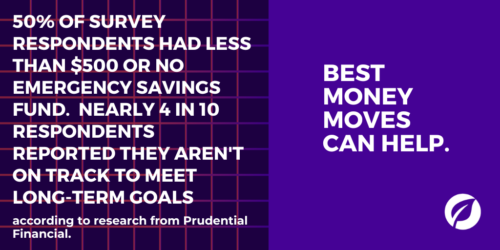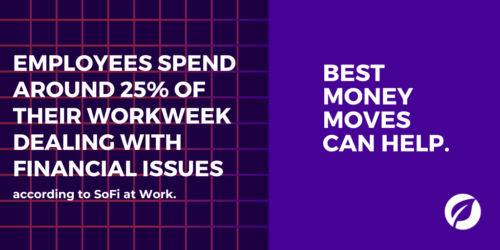
3 Ways to Improve Your Employee Retirement Benefits
Almost 4 in 10 employees say they’re not confident about reaching their retirement goals, according to a 2022 Bank of America report, and even more are unsure if they have enough savings to retire.
When it comes to retirement benefits, employees are looking for more than just a 401(k) — they want comprehensive guidance on how to prepare for the future. Here are 3 ways to help all employees get prepared for life during retirement.
1. Supplement retirement benefits with a digital financial wellness program that offers the latest technology.
Today, most employees prefer to manage their finances using digital apps and technology (including banking and investing), according to Bank of America’s 2022 report. And since employees are generally comfortable with using technology to manage their finances, consider delivering financial resources the same way. Similar to digital banking and investing tools, digital financial wellness programs offer a streamlined dashboard that help employees track their financial goals and debts.
Many digital financial wellness programs offer easy-to-use tools and resources for users to engage with on their own free time, like nest egg calculators, personalized savings plans and other retirement ready resources. Moreover, employees can learn how to manage competing financial goals like tackling credit card debt, while saving for retirement.
2. Educate employees Social Security, Medicare and other retirement benefits.
While Social Security and Medicare are designed to help aging and retired populations, unfortunately, many of these benefits get left on the table due to lack of knowledge. About half of employees say they aren’t getting enough education about Social Security and Medicare benefits. Without knowing the importance of these benefits, employees are less likely to seek them out.
For ideas on how to educate employees on their benefits, consider using targeted email marketing or hosting financial planning workshops (food and refreshments are always a good incentive).
With the right education on their benefits, employees can appropriately plan for the future and its associated costs, like supplemental health care, for example. One in 3 medical costs in retirement are not covered by Medicare. By understanding what’s covered in Medicare’s policy and what’s not, employees and pre-retirees can make the appropriate adjustments for retirement preparedness.
3. Invest in 1:1 financial consulting.
In addition to a retirement account, employees are looking for financial advice on how to best prepare for retirement. About 60% of employees said they feel stressed while managing their retirement savings, according to a Goldman Sachs report. With a financial advisor, employees can develop a comprehensive retirement plan with less stress and in less time.
All employees are in different stages of retirement preparedness and security. Some may be at the beginning stages and need help simply choosing between a Roth IRA or 401(k). Others may have thousands already saved for retirement and need help shifting from saving to using retirement funds.
No matter one’s age or stage of retirement preparation, most people can benefit from money coaching and guidance. And rather than giving cookie-cutter advice, the best advisors will give employees personalized counsel that empowers them to make well-informed financial decisions.
Looking for a digital financial wellness program to bolster your retirement benefits? Try Best Money Moves!
Best Money Moves is a mobile-first financial wellness solution designed to help dial down employees’ most top-of-mind financial stresses. As a comprehensive financial well-being solution, Best Money Moves offers 1:1 money coaching, budgeting tools and other resources to improve employee financial wellbeing. Our AI platform, with a human-centered design, is easy to use and fit for employees of any age.
Whether it be retirement planning or securing a mortgage, Best Money Moves can guide employees through the most difficult financial times and topics. Our dedicated resources, partner offerings and 700+ article library make Best Money Moves a leading benefit in bettering employee financial wellness.
To learn more about Best Money Moves Financial Wellness Platform, let’s schedule a call. Contact us and we’ll reach out to you soon.









